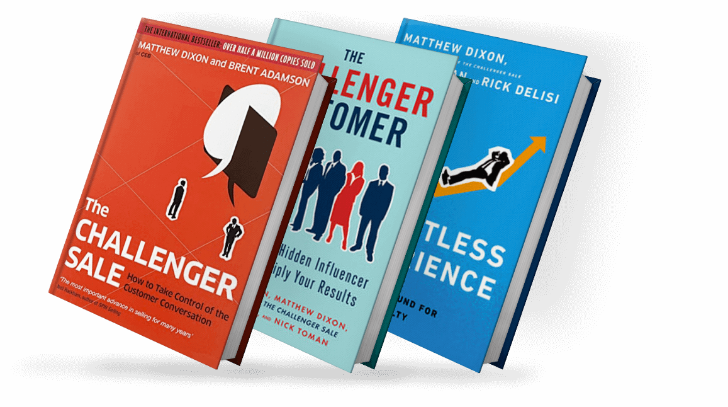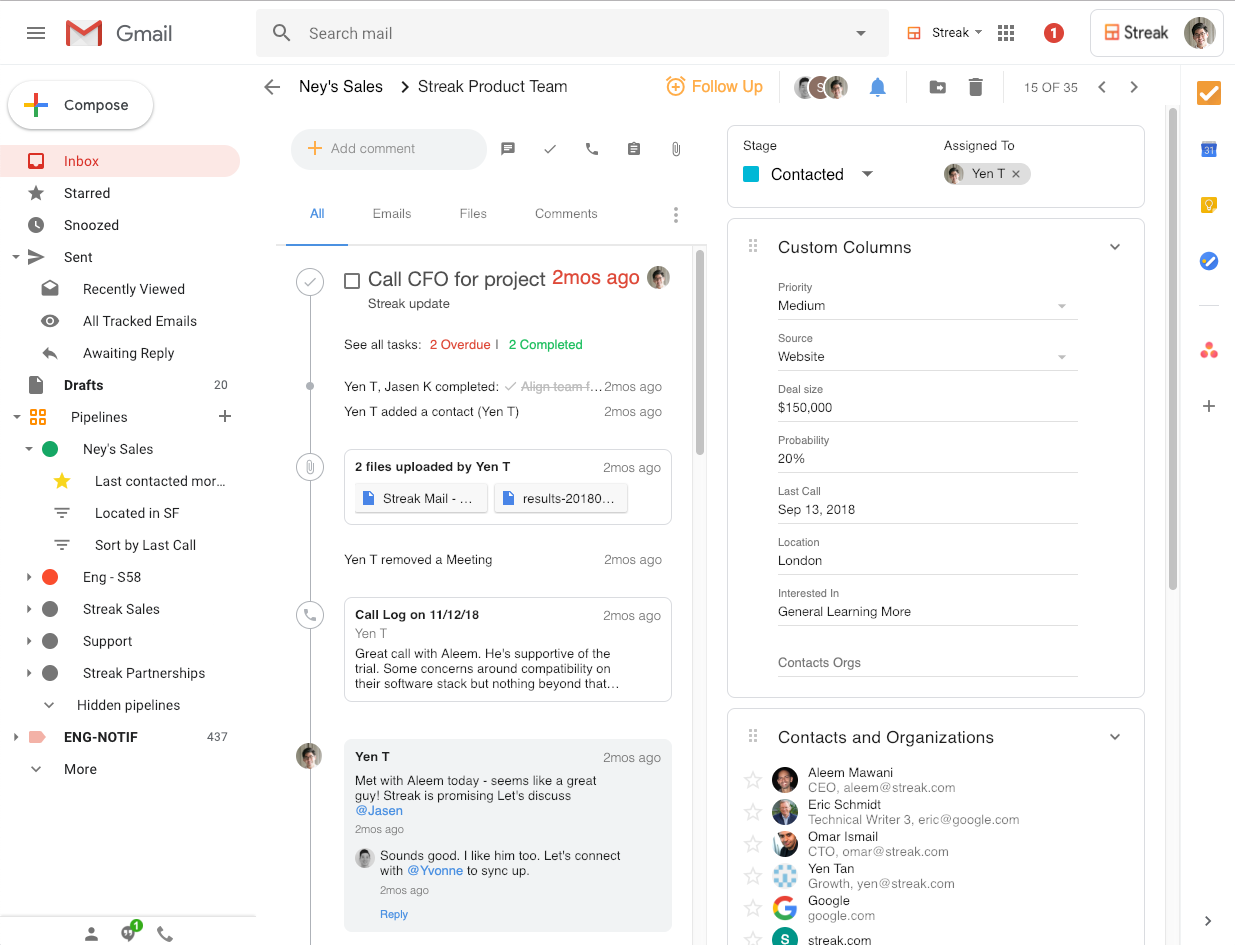Opening now...
The Challenger sales model: What it is and how it works
Truth be told, traditional B2B sales tactics are becoming less effective every day. Buyers are no longer interested in learning about a product's features; they’re more informed than ever. They must be convinced that your solution is the ideal solution to their problem.
The Challenger sales model offers salespeople a unique approach to changing the status quo. The model's strategies and techniques push the customer to open up to new ideas.
By the end of this article, you'll understand why the Challenger method works, how to potentially apply it to your sales organization, and what you may need to do to help it fit your sales process.
Let's get to it.
What is the Challenger sales model?
Developed by Matthey Dixon and Brent Adamson, the Challenger sales model doesn't aim to build relationships with prospects. Its core idea is that sales professionals should take control of the customer conversation using skills and tools learned during sales training.
With control of the sales conversation, a Challenger rep can lead prospects to realize that their solution is the best way to solve their problem. It's about using techniques to spark customers' interest in solving a problem they may not even know they have.
Matthew Dixon and Brent Adamson believe adopting Challenger behavior is more effective in closing sales than building customer relationships. But what exactly does it mean to be a Challenger?
The five types of sales reps
After thorough research, Dixon and Adamson discovered that sales reps can be categorized into five different profiles based on their attitudes and behaviors:
- The hard workers are the ones who go out of their way to improve in their roles. They always seek feedback, are determined to reach maximum efficiency, and refuse to give up easily.
- The relationship builders focus on emotionally connecting with their leads to develop customer loyalty. They dedicate a fair amount of time to helping others. A relationship builder is crucial in many sales models, but not the Challenger sales method.
- The lone wolves aren't team players. Being independent and self-motivated is part of their nature, so they only trust their own instincts.
- The problem solvers are attentive to details and determined to find the best solution for customers' challenges.
- The Challengers are essentially provocateurs. They push the customer out of their comfort zone and offer a new perspective. They're always up for a debate and aren't afraid to discuss money.
According to the Challenger sales strategy, Challenger sales reps are top-performing salespeople, and other sales professionals should adopt Challenger behaviors.
As they're naturally provocative, they create tension by challenging customers to think outside of the box and consider new opportunities.
Key principles of the Challenger sales methodology
In addition to being provocateurs, Challengers are teachers who know each of their prospects’ businesses very well. When they demonstrate this knowledge, they prove their credibility and teach prospects things about their business they may not even know.
So, the Challenger sales strategy is based on the following four points:
- Teaching: Teach prospects about the possible solutions to their problems (and highlight their solution as the best).
- Tailoring: A Challenger rep will personalize each sales pitch to address the prospect's pain points.
- Taking control: Essentially, the Challenger selling model aims for the sales rep to be in charge of all conversations and lead prospects toward the solution they offer.
- Disruptive thinking: Sales reps challenge customer assumptions by providing new insights that make them question their original ways of doing things.
The Challenger sales methodology: a step-by-step guide
Since the Challenger sales process is all about teaching prospects rather than building a relationship, a Challenger sales rep must follow the right strategies to nudge customers into buying their product or service using these five steps.
Step #1: Warm-up
If you want to prove to customers that your solution would improve their business, you should start by deeply investigating their problems and needs. Although you're not focusing on nurturing a relationship, you still want prospects to trust you.
Showing customers genuine interest in their challenges builds credibility. At this stage, the main focus is solely on finding out the prospect's pain points; you shouldn't even mention your product yet.
Step #2: Reframe
Now that you're aware of the prospect's most significant challenges, it's time to open their minds to other possibilities to solve them. To do this, you need to focus on finding the root of the problem. Knowing this allows you to transform that problem into a growth opportunity.
During this step, you may encounter resistance from the prospect, who probably thinks they already know the key to solving that problem. This is when you should instigate the prospect to reflect on different perspectives and new possibilities that haven't crossed their mind.
To sum it up, your goal during this phase is to make the lead realize that the alternative solutions they have in mind won't work. Only then will you be able to reframe the sales conversation toward fresh and unique solutions.
Step #3: Rational drowning and emotional impact
By this point, your prospect is already open to new insights, and you have a solid understanding of their needs. So, it's time to leave the subjectivity elements and present actual data showing the impact that not solving that problem can cause.
The Challenger sales model states that emphasizing real numbers associated with change is more effective than focusing on your product's benefits (as many other sales methods do). Especially because the figures you present in this stage may make the prospect feel uncomfortable, be sure you create an opportunity or “way out” for them by providing tangible solutions to their problems.
Although numbers are impactful, emotional appeal also plays a part here. To make an emotional impact, share case studies of other customers who solved the same problem. This way, it's easier for the prospect to imagine themselves in that position and bolster their belief in your solution.
Step #4: A new way
Now that you've shifted your prospect's mindset, it's time to show them what your solution looks like in practice. Make sure to highlight the advantages of solving the problem with your product or service.
You can build that confidence in your brand by sharing your product's value proposition. It's also essential to discuss the changes the prospect would have to make in their process to solve their problem with your specific solution.
Step #5: Your solution
At the last stage, the prospect should be finally convinced that they want to solve their problem with your product or service.
Now it's time to share why your solution is the best on the market for the problem the prospect is trying to solve. The prospect will likely be interested in learning more or getting a demo.
At this point, the chances of closing the sale are high, as you're not just marketing your product or service's benefits; you've opened up your prospect's mind to consider new possible solutions, and your product or service is just right for what they need.
Why should sales professionals adopt the Challenger sales approach?
According to The Challenger Sale book, high-performing salespeople use the Challenger model in complex sales. A study of more than 6,000 sales representatives found that 40% of the top performers used the Challenger approach.

Plus, the best-performing sales leaders were more than twice as likely to use the Challenger approach than other strategies. So, there's little room to question its efficacy.
However, it's important to remember that the Challenger sale method is really only effective for high performers and complex sales cycles. In a context where the sales team's performance is just average and the sales cycles are simple, Challenger selling may not be the right approach.
Unlock the power to win more sales deals with Streak
A top-performing sales team that uses the Challenger method needs prospect and customer information at their fingertips, and a CRM solution is just the tool for the job. With Streak, workflows, sales pipelines, and email conversations are all easy to access right from your Gmail inbox.

Features like pipelines, saved views, and funnel reports help sellers effectively manage their leads, prospects, and contacts to streamline the selling process.
Curious about Streak? Test it for free for 14 days and see how you can elevate your sales efforts like 750,000+ happy users already are.
Frequently asked questions
What is the difference between SPIN selling and the Challenger method?
Although both sales strategies focus on identifying a customer's challenges, these two methodologies are quite different. The SPIN selling strategy involves asking questions to discover a customer's needs. SPIN stands for situation, problems, implications, and needs.
The acronym represents the four types of questions sales teams should ask to learn everything about the prospect's challenges. Then, with a comprehensive understanding of the main pain points, sales reps can customize a compelling sales pitch for their solution.
Unlike SPIN selling, the Challenger sales model is built around strategies to teach, tailor, and take control of the conversation. The main goal is to disrupt the customer's mindset and introduce a new perspective.
Both strategies can be effective. The reason for choosing one or another will depend on specific factors, such as the sales context, the style of the sales professional, the nature of the product or service, and the customer's specific needs.
What personality type makes the best sales rep?
According to time-tested research by Steve W. Martin, seven personality traits make a salesperson successful: modesty, conscientiousness, achievement orientation, curiosity, lack of gregariousness, lack of discouragement, and lack of self-consciousness.
Is the Challenger sales model still relevant?
Yes, the Challenger sales model is still relevant. However, sales managers should consider it an effective approach for high-performing salespeople dealing with complex sales cycles. In other words, it’s not for everyone.
Subscribe to our blog
Stay in the loop with Streak’s latest features and insights.





.webp)


